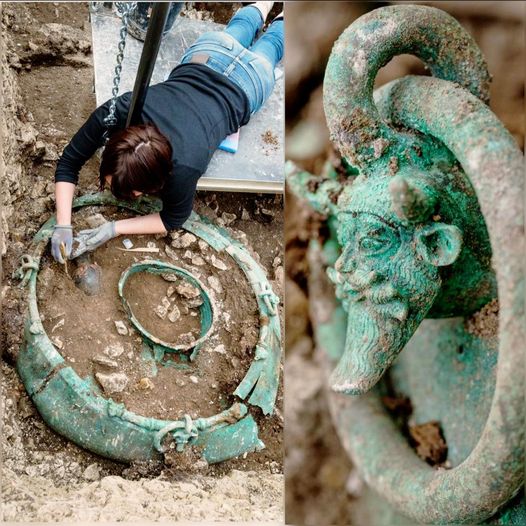
a lavishly furnished tomb belonging to a Celtic prince dating back to the 5th century BC. The exact identity of the prince remains unknown, as no inscriptions or written records were found to directly identify him. However, the wealth and grandeur of the burial suggest he held significant power and status.

This burial site, located in Lavau, held incredible artifacts that offered a rare glimpse into the wealth and power of the ancient Celtic elite. The prince was buried with a chariot, surrounded by treasures that included an intricately decorated bronze cauldron, Greek and Etruscan pottery, and a golden torc, one of the most iconic symbols of Celtic royalty. Among the remarkable finds was a unique 5-foot-wide bronze cauldron, adorned with the head of the Greek river god Achelous, featuring large, exaggerated horns. This cauldron, believed to have been imported from Greece or Etruria, likely served a ceremonial purpose for feasts or rituals involving the consumption of wine—a significant luxury among the Celts.
These artifacts suggest the Celts had far-reaching trade connections, even with Mediterranean cultures, highlighting their significance in early European history. The discovery of the tomb not only sheds light on the burial practices and craftsmanship of the time but also reinforces the Celtic tribes’ sophisticated status during the Iron Age.
